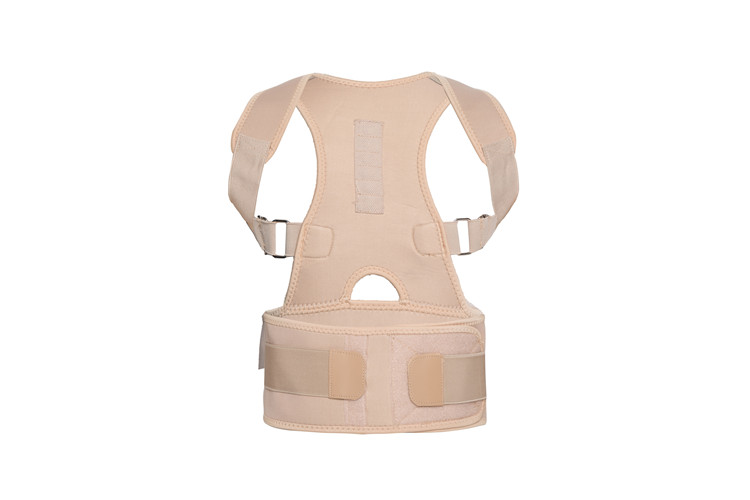First, the importance of bamboo anti-corrosion
The composition of bamboo cell wall is similar to that of hardwood in wood. The content of non-cell wall material is higher than that of broadleaf, such as starch, reducing sugar, protein, fat, minerals, etc., which can provide sufficient bacteria, fungi and aphids. The nutrients make bamboo and its products prone to mildew during storage, processing and use. Bacterial rot and worms are harmful, affecting their quality, reducing or even completely losing the value of use.
Bamboo protection is the necessary treatment after bamboo harvesting and processing to prevent mold, bacterial rot and insects. There are many kinds of fungi that damage bamboo. Among the five sub-gates of the fungal door, there are the genus Zygomycetes and Ascomycetes. Many fungi belonging to the four sub-gates such as the genus Bacillus and the genus Aspergillus are harmful to the bamboo. Common molds that mainly cause mold damage are mucor, penicillium, trichoderma, aspergillus, and Phytophthora. The main fungus of bamboo is mainly 6% and bacterial rot. Bamboo mold fungi mostly use non-cell wall material as nutrient, which is mild to the cells and does not affect the strength of bamboo. However, colored hyphae, foaming and pigments secreted by hyphae will form blue, brown and gray mildew on the surface of bamboo. It even causes considerable depth of dyeing, that is, it is difficult to remove with bleach treatment or surface planing, which makes the bamboo lose its natural texture and color, greatly reducing the value of bamboo and bamboo products. Bamboo decay fungi also secrete cellulose and hemicellulose hydrolase systems. Therefore, bamboo rot fungi can obtain nutrients by degrading cell wall materials such as cellulose, hemicellulose, and even lignin, so that bamboo cells are destroyed, mechanical strength is reduced or even completely lost in use value.
Although bamboo aphids mainly absorb non-cell wall materials as nutrients, they do not have this choice when foraging. The whole cell tissue is foraging, forming many channels, which impairs the mechanical strength of bamboo and reduces the use of bamboo and bamboo products. Value, in severe cases, most of the bamboo is almost completely damaged, bamboo yellow and bamboo green are also everywhere the adult into and out of the hole, and completely lost the use value.
It can be seen that the research on the protection technology of bamboo mold, anti-bacterial and anti-insect pests and the promotion and application in production are extremely important issues in the production activities of bamboo development and utilization, and their importance is far more than wood. . However, the research and application of bamboo protection technology is far less extensive than wood. Fortunately, the biological mechanisms and biochemical processes of mildew, fungus and worms in bamboo and wood are similar. Therefore, wood protection technology can be used as a reference for bamboo protection.
Second, bamboo anti-corrosion technology
The structure and chemical composition of bamboo provide sufficient material conditions for the breeding and breeding of insects, but the breeding of insects requires certain conditions, such as temperature, moisture, pH and so on.
Mold and decay fungi, most of the growth temperature range is 10 ~ 40 ° C, the optimum temperature is 20 ~ 30 ° C, only a few types have heat resistance or thermophilic habits, the growth temperature range is 20 ~ 30 ° C. Most require bamboo water content of more than 20% (relative humidity of more than 75%), but when it reaches saturation, the reproduction of most mold rot fungi is inhibited except soft rot fungi. The best pH required by most mold rot fungi is PH=5, but some people who are resistant to acid and alkali can still survive when the pH is as low as 1.5 or as high as 11.
The optimum growth temperature of aphids is 20-30 °C. When the ambient temperature drops to about 10 ° C or rises to 35 ~ 38 ° C, the aphid's ability to move is greatly reduced. When the ambient temperature continues to drop to 0 ~ 5 ° C or rise to 40 ~ 45 ° C, the mites stop development and foraging activities, in the cold cold paralysis or hot paralysis state, in a short time, if the temperature returns to the optimal temperature direction The mites can recover and gradually regain their vitality. When the ambient temperature continues to drop to 5 ° C or rise to 48 ~ 52 ° C, the lethal temperature range of the aphid is reached, and will die after a short time.
The protective technology of bamboo mildew, fungus rot and worms is to artificially create an environment that prevents them from performing normal physiological activities. The general requirements are: a. the method is simple and easy, the medicine is easy to obtain, the cost is low; b. the effect is good, the residual effect period is long; c. the environment is not polluted or within the allowable range; d. the material and appearance are not Less impact or impact. However, at present, there is no single agent that can meet the above requirements at the same time. The appropriate method should be selected according to the actual production (such as process flow, production environment, product value and use). There are two main types of methods for controlling insecticides in bamboo: physical methods and chemical methods.
1. Physical methods
(1) Impregnation: The bamboo is immersed in clean water (running water or regularly replaced water) to dissolve part of the water-soluble nutrients, and the cells are filled with free water to cause an oxygen-deficient environment to prevent and eliminate the bacteria.
(2) Drying: Dry or dry the bamboo. After the drying process, on the one hand, the insects can be killed by heating, and on the other hand, the bacteria can be difficult to survive due to the reduction of water.
(3) Electromagnetic wave radiation: Irradiation with far infrared rays (wavelength: 25 to 199 μm) and microwaves (wavelength: 103 to 105 μm) can cause resonance absorption of vibration and rotation of the inside of the bamboo. This energy absorption efficiency is very high, and in a short time (tens of minutes or ten minutes), the appearance and internal temperature of the bamboo can be simultaneously raised to the highest temperature of the insect to death. In addition, ultraviolet light (wavelength 4 to 400 μm), x-ray, y-ray, etc. can destroy biologically active substances in the bacteria, causing the bacteria to die.
(4) Air conditioning: adjust the gas composition of the bamboo storage environment, reduce the oxygen content, cause hypoxia, so that the fungus can not grow, the mites suffocate and die.
(5) Cooking: heating and cooking to remove some soluble substances and kill the bacteria.
Physical methods One-time insecticidal sterilization is mostly quite effective, but it does not prevent re-infection of insects during subsequent production, storage, and use. Therefore, most of the production practices use a combination of physical and chemical methods.
2. Chemical methods
(1) Insecticides: There are two main types of organic compounds and inorganic substances.
Organic agents mainly include inorganic agents:
These insecticides can be used in a single dose, but in order to make the efficacy of the preparation broad-spectrum, and even have the dual role of insecticidal sterilization.
(2) Treatment method:
Different shapes of bamboo or products, different pharmaceuticals, to use different treatment methods, can be selected from the following treatment methods.
Dipping, spraying, and brushing methods: All three methods are surface treatment methods, and the dried materials are generally impregnated, sprayed, or painted with 0.5% to 5% of the liquid. Most of the agents can be used in these methods. The processing is simple, the equipment requirements are not high, and the investment is small. However, it is not possible to enter the depths of the bamboo. If it is processed, such as boring and cutting, the untreated bamboo will be exposed.
Hot cold trough method: Put the bamboo in a hot medicine (close to boiling temperature but not to boil) for a certain period of time, immediately remove it and immerse it in cold medicine (can be at room temperature). This can increase the absorption and depth of penetration of the agent.
The sap replacement method: the end of the base of the felled bamboo is put on a tightly held "hat" and "hat" connected to a pressurized container through the tube. The medicament in the pressurized container can be pressed into the bamboo material and flowed along the catheter to the tip, and the drug solution can be terminated when the drug solution is discharged from the tip fracture. Although this method is troublesome, the medicament can enter all the bamboo materials, and the required equipment is relatively simple. For some special materials with high value, this method can be used.
Diffusion method: suitable for bamboo with a water content of more than 30%. Soak or brush the bamboo in a thicker liquid (10% to 30% or more) to attach the medicine to the surface of the bamboo. Then pile up and seal it with plastic cloth for 2 to 3 weeks. The agent is spread to the inside of the moisture of the bamboo. This method requires a high water content, using a water-soluble agent, and the molecular radius of the agent should not be too large.
Pressurization method: The bamboo material is sealed in a special pressure tank, and the medicine is pressurized, and the medicine is allowed to enter the inside of the bamboo under pressure. As long as the appropriate agent is used, the agent can enter the entire interior of the bamboo under a certain pressure and time. Due to the complexity of the equipment required, a small amount of material can be commissioned by a dedicated pressure treatment plant.
Live bamboo injection method: At the appropriate time before harvesting, the fungicide is injected at the base of the bamboo pole and then harvested. According to the relevant unit test, it has a good anti-mildew effect.
China Back Posture Corrector,Posture Corrector,Posture Corrector Brace,Correct Belt, we offered that you can trust. Welcome to do business with us. The type of the posture corrector can be various for the customers to choose from, they can well protect the customers' shoulder and back. It is ideal for shoulder support, upper back & neck pain relief. The brace has high elastic performance.
It makes you look confident and powerful
It improves bodily alignment
Eliminates back and neck pain
Improves breathing
Improves memory and learning
Makes you look taller, slimmer and attractive.


Posture Corrector
Back Posture Corrector,Posture Corrector,Posture Corrector Brace,Correct Belt
Yangzhou Sainuo Star Sports Products Co., Ltd. , https://www.cnsportsgoods.com